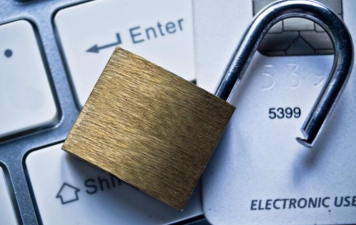In the era of digitalization in 2025, data has become one of the most valuable assets of enterprises. However, with the surge in data volume and the acceleration of data circulation, the risk of data leakage has also increased.
In the era of digitalization in 2025, data has become one of the most valuable assets of enterprises. However, with the surge in data volume and the acceleration of data circulation, the risk of data leakage has also increased.
- Use artificial intelligence and machine learning technology to achieve intelligent threat detection and response
With the rapid development of artificial intelligence and machine learning technology, its application in the field of data leakage prevention has become increasingly extensive. In 2025, leakage prevention solutions based on artificial intelligence and machine learning have become a major innovation trend.
These solutions establish user behavior models and data flow models through learning and analysis of a large amount of historical data and real-time data. Under normal circumstances, users' operation behaviors and data flow patterns are relatively stable. When abnormal behaviors occur, such as downloading a large number of sensitive files in a short period of time, frequently accessing confidential data during non-working hours, etc., the system can quickly identify and determine whether there is a risk of data leakage. For example, a financial institution uses this technology to monitor employees' access operations to customer information in real time. Once it is found that an employee's access behavior deviates from the normal model, the system immediately issues an alarm, and the management personnel can investigate and deal with it in time, effectively preventing the risk of internal personnel maliciously stealing customer information.
Artificial intelligence and machine learning technology can also continuously optimize the detection model. As new data and events are continuously input, the model can automatically learn and adjust, improve the accuracy and timeliness of detection, and better respond to the ever-changing data security threats.

- Implement zero-trust architecture and strengthen data access control
Zero-trust architecture occupies an important position in the field of data leakage prevention in 2025. Traditional network security protection systems are mostly based on "trust boundaries" and believe that the inside of the network is safe. However, a large number of data leakage incidents have shown that internal threats cannot be ignored. Zero-trust architecture breaks this traditional concept and follows the principle of "never trust, always verify".
Under the zero-trust architecture, whether the user is in the internal network or the external network of the enterprise, whether it is an employee or a partner, when accessing data resources, they need to undergo strict identity authentication and permission verification. Moreover, this verification is not a one-time thing, but a continuous process. For example, after an enterprise implements a zero-trust architecture, when employees log in to the internal system of the enterprise, they not only need to enter their username and password, but also need to pass SMS verification codes, fingerprint recognition and other multi-factor authentication methods. During the process of employees accessing data, the system will monitor their behavior in real time, and once an abnormality is found, it will immediately re-authenticate or restrict access rights. In this way, data leakage caused by account theft or abuse of authority is effectively prevented.
- Use quantum encryption technology to improve data encryption security
With the development of quantum computing technology, traditional encryption algorithms are at risk of being cracked. To meet this challenge, in 2025, quantum encryption technology will become an innovative highlight in the field of data leakage prevention.
Quantum encryption technology uses the principles of quantum mechanics to achieve absolutely secure key distribution. Unlike traditional encryption algorithms, quantum encryption keys are non-copyable and non-eavesdropping. Once someone tries to steal the key, the quantum state will change, and both parties in communication can immediately detect it. For example, in some industries with extremely high data security requirements, such as military and finance, quantum encryption technology is used to encrypt and transmit sensitive data. Through quantum key distribution, the security of encryption keys is ensured, and then the confidentiality and integrity of data during transmission are guaranteed, providing a more solid guarantee for data security.
- Build a blockchain data leakage prevention system to ensure data integrity and traceability
Blockchain technology, with its decentralized, tamper-proof, and traceable characteristics, has shown great application potential in the field of data leakage prevention in 2025. The data leakage prevention system built on blockchain brings new solutions to data security.
In this system, data is stored in the form of blocks on a distributed ledger. Each block contains the hash value of the previous block, forming an unalterable chain. When the data changes, a new block is added to the chain, and all operation records are permanently saved and cannot be tampered with. This effectively ensures the integrity of the data.
